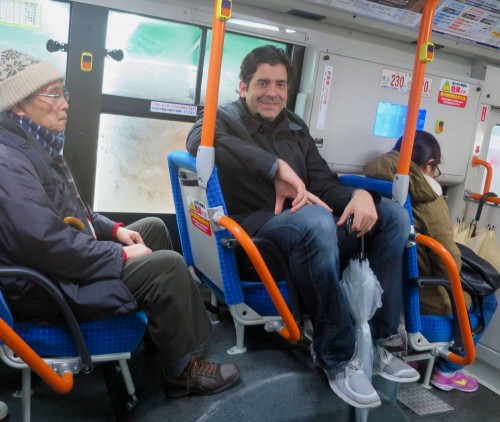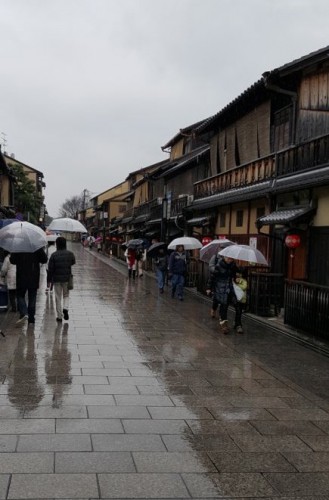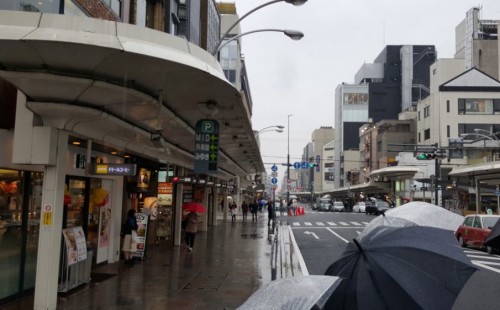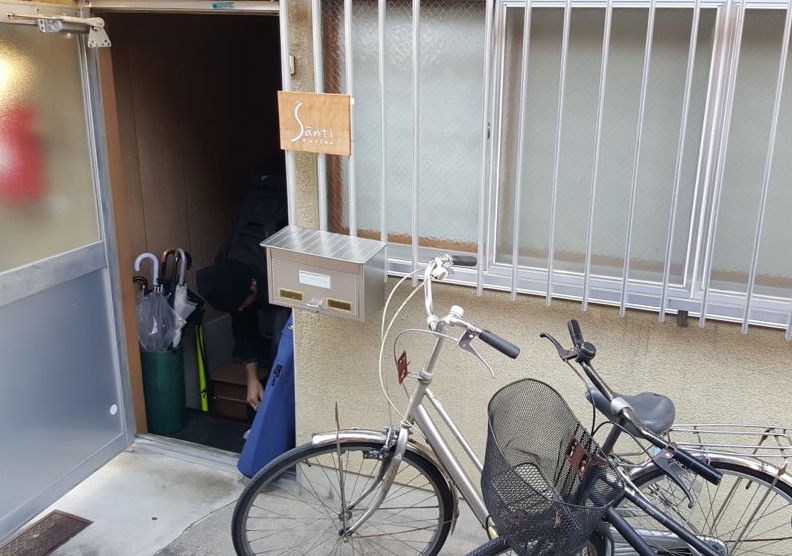SAT April 30th, 2016 0:00Am, NYC
EXPERIENCE:
NY Gurubai’s Visit to Japan, Winter 2016
and Its Synchronization with Pranavadipa Vol. 17:
Part 5:
ACT ON FAITH
CONCRETIZE YOUR GOAL
DETERMINE HOW TO ACTUALLY PRACTICE IT,
THEN ACT
Day 7:

On Thursday our plans were to spend the afternoon visiting the hospital where Yohei’s friend is in order to participate in some volunteer work there, and then in the evening go to the public bath where Shri Mahayogi used to go when he was a child.
After lunch, Yohei led us to Utano Hospital, located on the west side of Kyoto City. On the way there, near the end of the journey, the roads became full of really steep hills and the ups and downs of the journey made for quite a challenging bicycle ride. When we arrived at Utano hospital we met Yohei’s friend, Toki.

Yohei has known Toki, who is 19 years old, for one year now, after meeting him through Toki’s friend, for whom Yohei regularly volunteers to take on the role of personal attendant. Yohei first met Toki at a group meeting for people with challenging physical conditions similar to that of Toki while volunteering to attend Toki’s friend. This group had been formed so that its members could come together to connect with each other and create fun activities together. The group outings that were organized provided ongoing opportunities to regularly spend time together and share life experiences. Both Toki and his friend, who was assisted by Yohei, were regularly attending and participating in these community activities. Toki is a very bright and active young man who is one of the central figures of this group, since he created and now maintains their website all by himself, moving the computer mouse with his chin in order to do so. Toki has been hospitalized there since primary school because of his physical condition, and has attended only schools affiliated with this hospital.
Anyway, certainly, it must have been a big surprise for the nurses there when all of a sudden, we strangers showed up as a group, including these tall foreigners. Toki was the only one who knew that we were coming. Yohei introduced us and we then started to clean the area around Toki’s bed in the room that he shared with three other patients. The area for us to clean and organize was not very large considering there were twelve hands, so there was not too much work to be done in that sense. But it was very nice to meet Toki and have a chance to observe and learn directly from the work that Yohei does as a social worker. Yohei was so natural and attentive with him.

Yohei, Nandi (from left), Anandamali (behind Nandi), Taka, Toki, Aniruddha and Ryan
*
After that, we were planning to have dinner out at a restaurant but it was early, so we passed the time at a small local café nearby. There Yohei began to tell us about his karma yoga practice. He said that he used to think that karma yoga was the practice of serving the poor or those who are in difficult situations, and so he would sometimes go to Fukushima, which has been deeply suffering since the earthquake disaster of 2011. However, Yukti, who has moved to Fukushima to serve people there by working as a nurse, always told him that he should find ways to continuously serve the people of Kyoto. He did not understand the meaning of what she said, but recently he has started to realize that he was actually making a distinction between superior and inferior work. So now he makes sure that he performs any and all tasks that arise with the same sincerity, whether it be the work of the Mission, his daily tasks, his job, housework or volunteer work.
*

This local restaurant was the place where Yohei brought up the topic of mauna (spiritual silence) to Nandi by questioning him, “What do you consider to be mauna, and how are you actually practicing it?” “Since you have been prescribed this precious teaching, mauna, by Shri Mahayogi, why have you not thought about how to actually practice it? The fact that you are asking me this question—‘How should I actually practice mauna?’—now is so strange in and of itself.” (From Yohei’s article in Pranavadipa Vol. 17.) Yohei was so clear and went directly to the core of the issue. It seems that it finally hit Nandi’s heart very heavily, and at the same time it seemed that something shifted in Nandi at that moment. Nandi immediately became quieter. Yohei not only pointed out Nandi’s issue but he also explained to him by way of an example how important it is to have a concrete goal, and to think concretely about how to attain that goal.

*
Yohei was so clear and charged up about all of this that he could not finish all that he wanted to say, so we decided to continue our talk after leaving the restaurant. We could have gone back to Shanti Kutira, but since the public bath we were planning to visit was located in between Shanti Kutira and the restaurant where we had dinner, and we also felt it would be more refreshing to talk outside of Shanti Kutira, we were left with no choice but to return to the same café where we had gone just the night before with Sananda.
At the café, Yohei spoke about the importance of clarifying one’s ideal and making it concrete. He asked each of the NY brothers who their ideal Realized Being was. Nandi answered right away that it was Shri Mahayogi. But Yohei said that it is important to have someone as your ideal who started out like us and realized the Truth through great struggle, and then to meditate on him or her. The reason this is necessary is that it is extremely difficult for our minds to concretely grasp the Realized Beings who are at the level of avatar, who were born without karma for the sake of the people that they might awaken into Truth. However, if we meditate on the former level, we will be able to understand and learn from the concrete efforts of those individuals and how they went about attaining the goal.
Aniruddha was silent while he was listening, but then suddenly he said, “I understand now that my faith has been very intellectual, and what I need to do from now on is act on my faith.” When Yohei asked Aniruddha about his ideal, Aniruddha said that it was Vivekananda because Vivekananda is so straightforward, and he receives much courage from that straightforwardness.
Taka was concerned that a lot of the questions that the NY brothers asked were only about how to meditate so far, so then he started to speak about the fact that although it is true that there are some logical instructions that can be given about how to meditate, in the actual practice of meditation, there are only two states: concentrating or not concentrating. Therefore, what is crucial to advance in the practice of meditation is a keen sense of urgency toward the object of meditation. He then spoke about his experience, that sometime back when his object of meditation was not yet solidified, in other words, around the time when he did not understand how he actually wanted to be or what he was keenly seeking, he single-mindedly thought about and investigated first what he was truly seeking and how he wanted to live, regardless of whether he would consider practicing Yoga or not. This took him nearly one year. He realized that there was nothing that he was particularly attracted to in this world and through observing his mind daily, it became clear that the condition of his mind differed from day to day, constantly changing and shifting. He realized that he couldn’t rely on his mind at all. And what’s more, when he reflected on the reason for which he was living so far, he sensed that he was somehow always seeking ecstasy, or bliss, and that he did things or was attached to things by this motivation to taste and experience that ecstasy. He further considered what the ultimate of ecstasy actually was: in Yoga, it is said that the ecstasy, the bliss, continues endlessly, and that there is nowhere that it does not exist—not only that, it is the essence of the Self. He then felt that This is what he must realize, no matter what it would take; he must realize It at all costs. After that, there were periods in which he continued practicing disciplines of Yoga all the while thinking that he would not mind dying if it meant that he would be able to experience that ultimate ecstasy. So, what he realized through that process was that what he senses when the “I” consciousness is fading away, and what he senses in the process of meditating on Existence, Awakened Beings or Saints who have realized that ultimate ecstasy, is exactly the same. After all of that he finally started to understand little by little what he really wanted to realize and how he should proceed with his meditation. Now he is working on that so that he can proceed further.
Then, with the importance of a proper diet for the practice of Yoga, the conversation naturally turned to this topic. The NY brothers re-learnt that vegetables should be the primary side-dish, and tiny fish would not be a problem, but large fish and meats, are not recommended. Ryan asked to hear more about the details of the fish that are acceptable and with what frequency, so Taka spoke about it through his experience. The Mission in Kyoto has been conducting a cooking class called The Kitchen of Samarasa, and it is through this program that the disciples in Kyoto have been learning the spirit and philosophy of dietary matters as well as a concrete way of preparing meals according to the seasons. Taka was almost vegetarian before he started practicing Yoga, so he did not have any issues with refraining from eating meat. However, since it was not something he was accustomed to, meaning he had not established the dietary habits of cooking his own meals at all, he was hungry for this knowledge that would help him form his dietary habits based on the teachings of Yoga. In order to proceed in deepening the practice of asana and meditation, it would be necessary to base his meals on seasonal vegetables, and so he started to cook his own meals right after beginning the practice of Yoga. His mindset was that everything could be a learning opportunity, and therefore he practiced and disciplined his dietary habits in accordance with the teachings of Yoga. Around the time that two or three years had passed in this way, he came to understand the set cycle of the seasonal ingredients and basic cooking methods, and he realized that he had created a set of patterns throughout the year according to what each season necessitated. And it was through the acquisition of this knowledge that he felt that he had naturally come to establish his repertoire or his routine of dietary habits. He used to avoid animal protein at all costs, even the slightest bit, because he was so nervous about consuming it, but nowadays he takes it in a small amount once or twice a year on occasions when socially he cannot avoid it and to the extent that his physical condition does not become affected by it. Now, even though he may take in animal protein on these few occasions, afterwards he simply and naturally goes back to his routine of regular yogic dietary habits, which he has already established well. Therefore, regarding fish, he no longer needs to think about the amount or the size of the fish, because he knows it without having to think about it. Nowadays, he thinks that because he has acquired so naturally through The Kitchen of Samarasa such skills as how to shop, how to time the shopping, and what methods of cooking to use, etc., along with how to manage all of these things, he does not spend much time allowing his mind to think about diet. This is directly in contrast to earlier times when he was thinking a lot about the diet during meditation. He also said that although it is necessary to find ways to practice and to discipline yourself in order to form dietary habits that are in accordance with the teachings of Yoga, that is not the goal; therefore, he constantly tries to remember that he should not confuse the means with the goal.
*

“Minamoto-Yu”—the public bath where Shri Mahayogi used to go when he was a child. The NY brothers enjoyed it so much that they stayed there for a long time. Aniruddha, who had hesitated to experience it, said, “Now I know why Japanese people love it!” Surely, they all slept very deeply that night.
(The journey continues… )
*
POSTSCRIPT:
Two months after the visit of NY gurubhai
Yohei contributed his current thoughts on the blessing that we receive from meditating on a great saint as our ideal, a great saint who started out like us, and through great struggle realized the Truth.
“I felt that there were two blessings:
The first blessing—“your personal issues will be defined.”
I felt that through taking the first step of choosing or finding my ideal being, the motivation to get closer arose, and because of that, when I read the sacred words of the particular saint I chose, I felt that it was not the knowledge or the understanding through the intellect that I received, but rather, I felt that something was resonating within me. Also, by meditating on that particular saint, I experienced some visions that were not written in the book about that saint, or I had experiences of touching the heart and the spirit of that saint. However, these experiences were only in the realm of meditation, in other words, these are mere experiences in meditation. The thought came to me that I need to make what I experienced practical, so I felt that I must act like that saint in reality.
Yet that was very difficult. Through putting their examples into my actions, only then did I realize that I was only imitating the external aspects of that saint, but I did not actually grasp his essence. “What do I need to do?” “What is lacking in me?” I asked. I felt that that realization led me face to face with my personal issues, and it defined them.
It is not so easy to tackle your own personal issues, because you need to look at your negative parts, the parts where you are weak or need to change and improve. But having a concrete goal or an ideal being supports you to raise yourself up and to keep working positively toward that.
It may be a bit off track, but I remember that years ago when I was watching Sumo-wrestling matches, an interpreter said that each sumo-wrestler has their ideal or aim toward the particular wrestler, but the ones who keep making much progress have very concrete, particular and detailed views. For example, they would say, “I like this specific way of how this particular wrestler grabs the mawashi (wrestler’s belt).” So in a way, having such a concrete ideal has brought many blessings and benefits in all kinds of fields.
But still, there is a difference between Yoga and other fields: “the presence of an avatar, the absolute existence”—and that is the second blessing.
When I touched the saint who was not an avatar in the program, Siddha Marga, I sensed that Mother Theresa, Nag Mahasyaya, Vivekananda, they “all lived their lives obeying the divine order of an avatar, the guru.”
Mother Theresa, obeying the voice of Jesus, “I thirst,” went to Kolkata. Nag Mahasyaya obeyed the word of his master, “Practice remaining as a house-holder.” Vivekananda, throughout his entire life, staked his life on fulfilling the words of Shri Ramakrishna, “You must become a banyan tree.”
Over the course of their development, all the great saints carried on with their hardships regardless of the fact that they may have been conflicted within themselves, and all the while they were taking the orders of the guru with utmost seriousness in their hearts, and they accomplished that.
I too would like to live my life obeying the words of my guru faithfully, whatever those words may be, by following the great examples of saints in the past.”

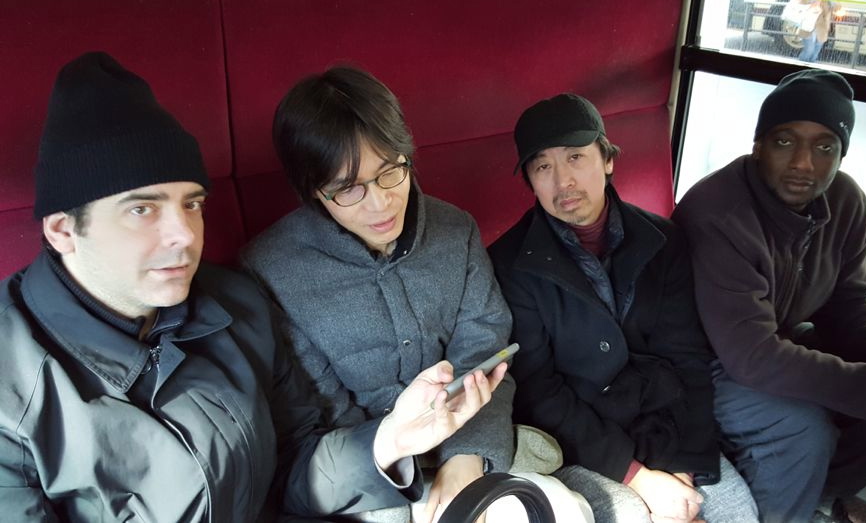
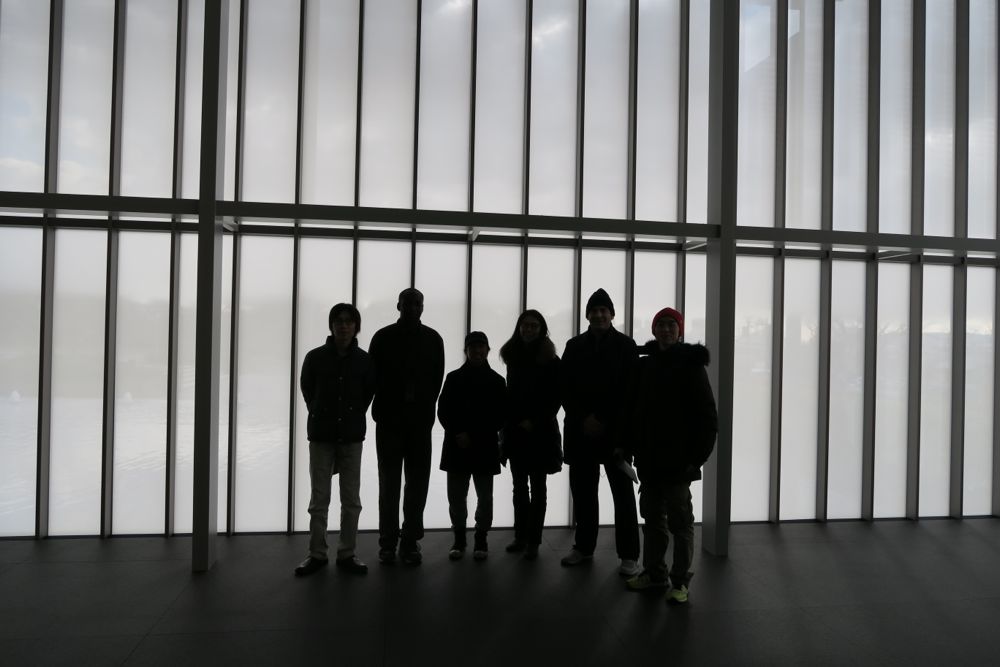
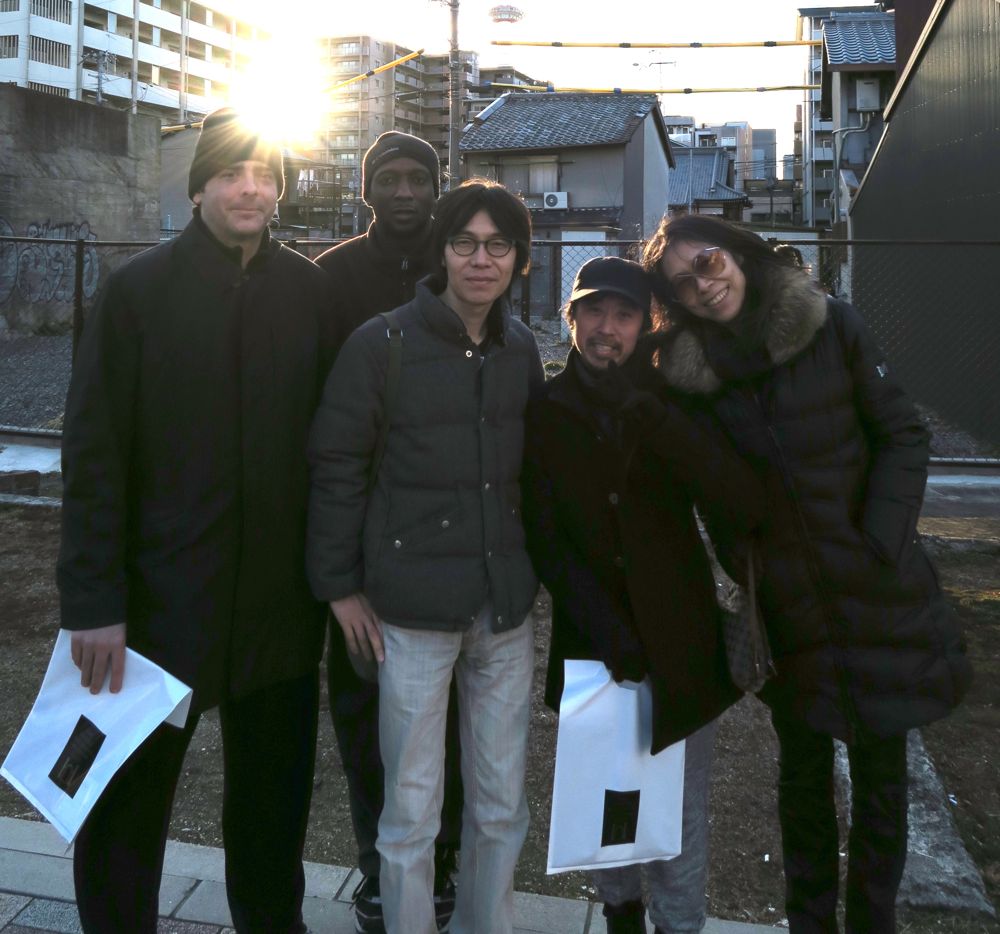

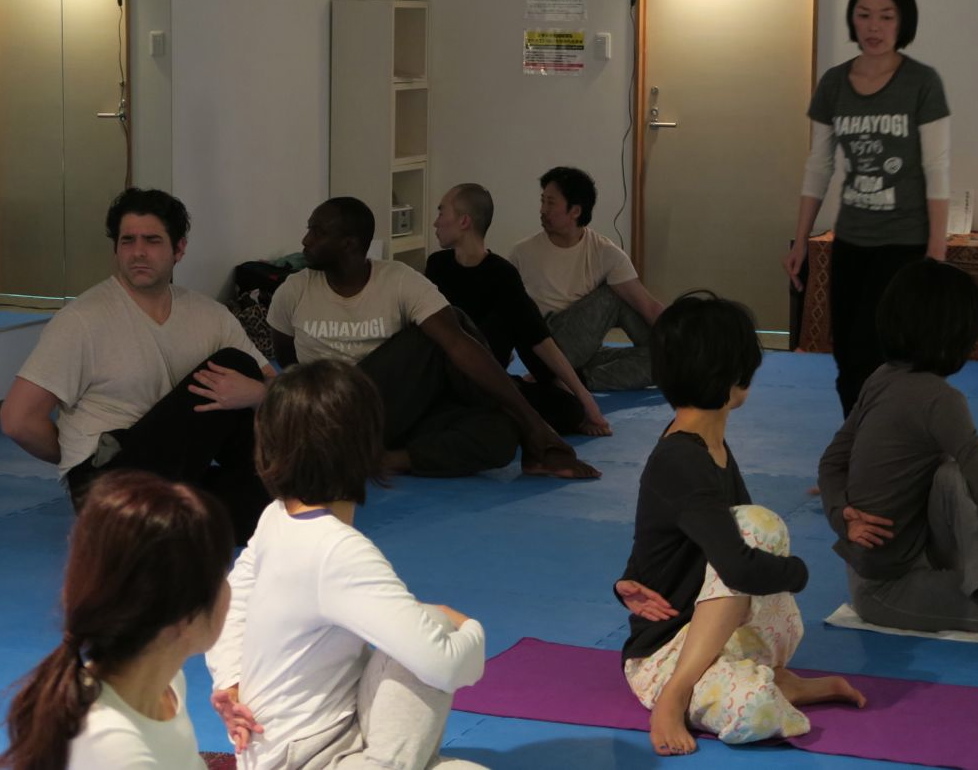 Asana & Meditation class in the center of Kyoto City, led by Madhri and Satya
Asana & Meditation class in the center of Kyoto City, led by Madhri and Satya

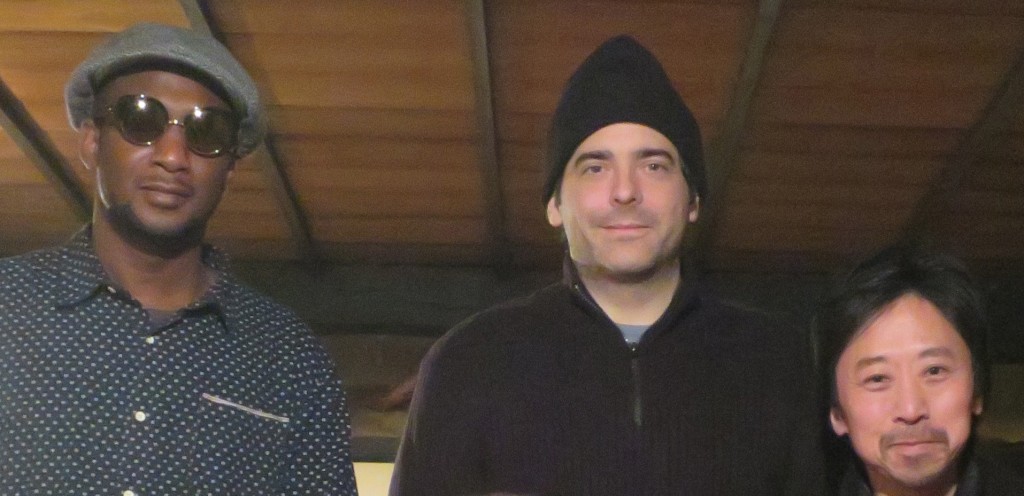
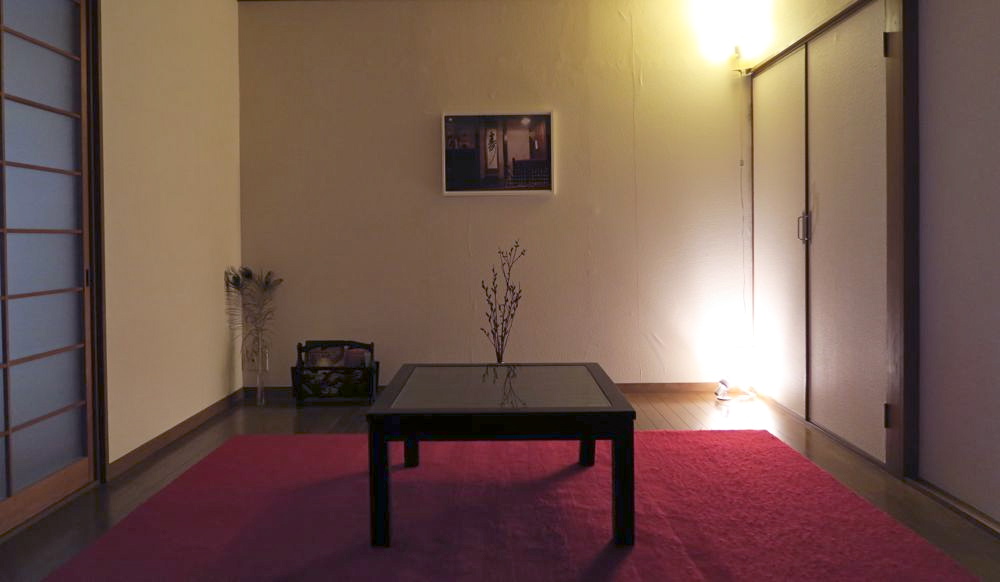
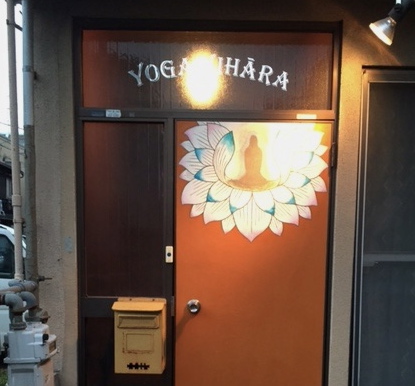


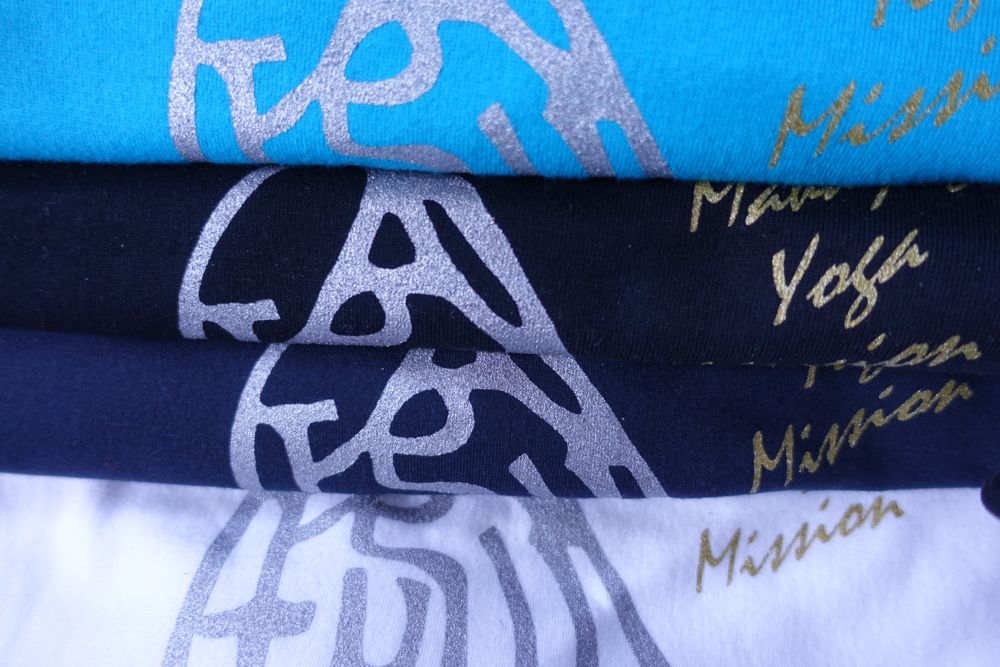 Long Sleeves.
Long Sleeves.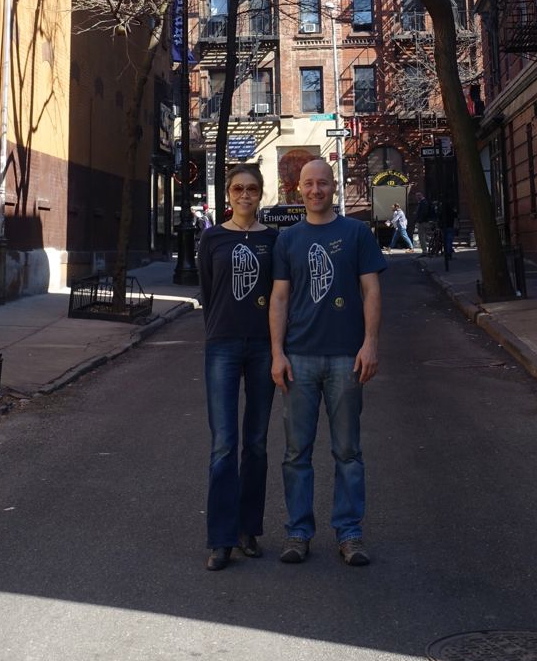
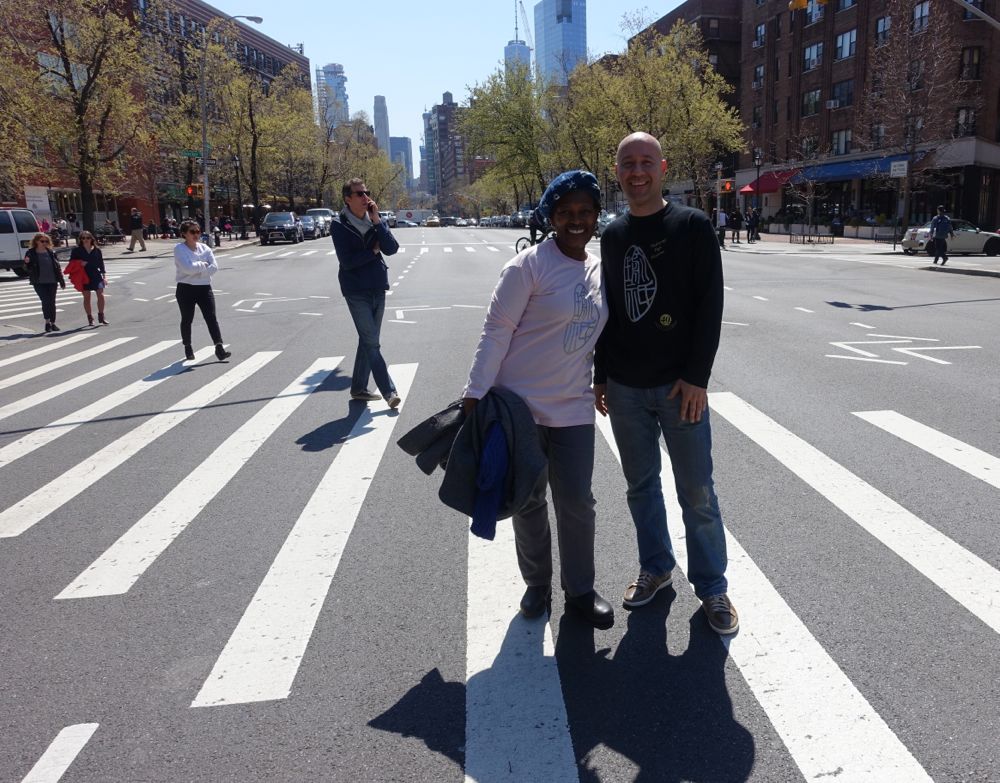
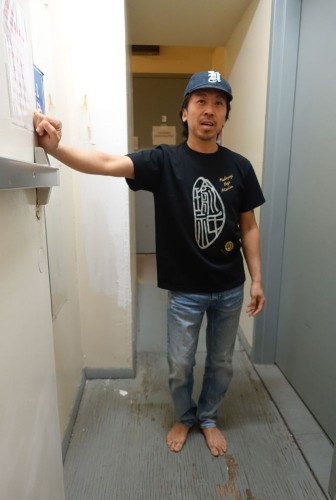
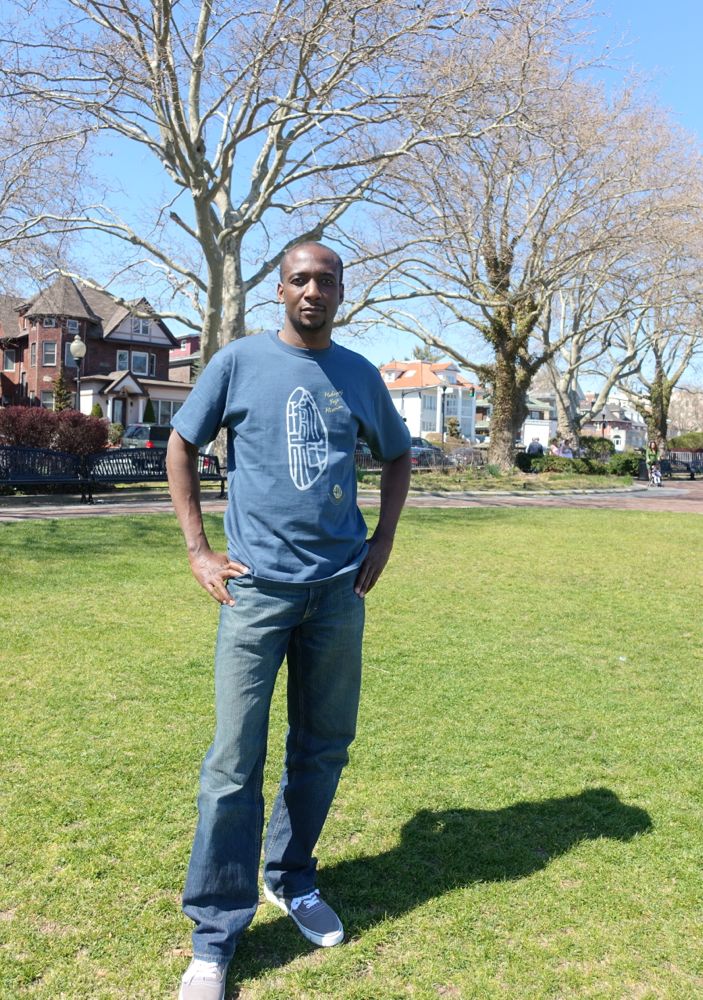
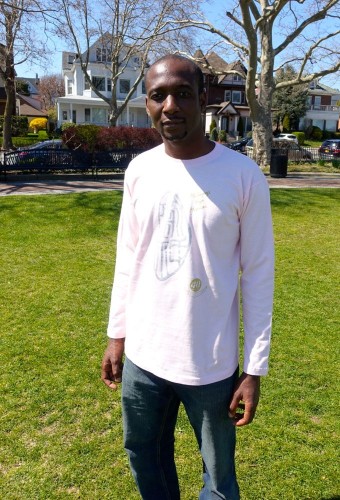
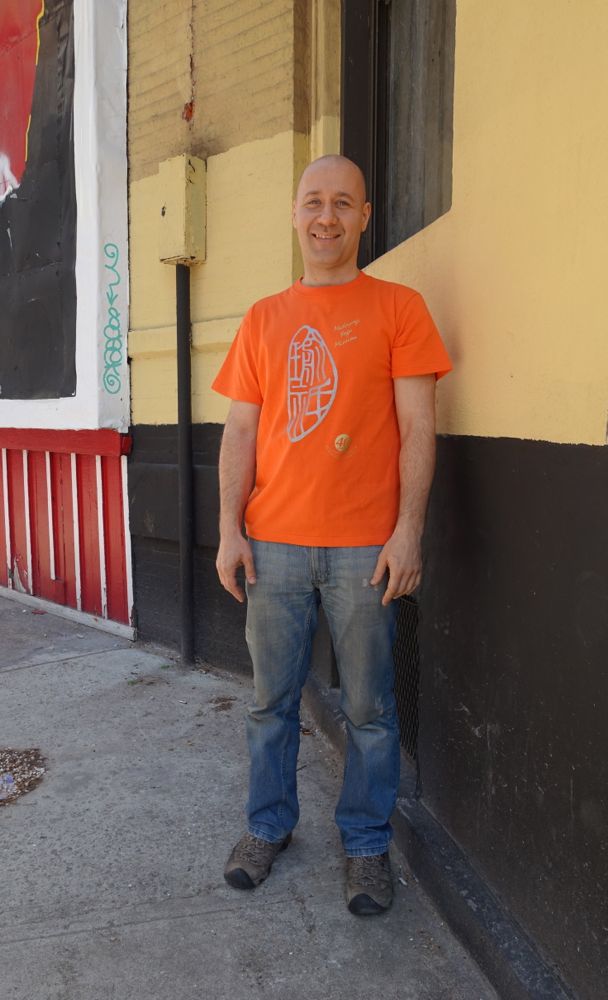
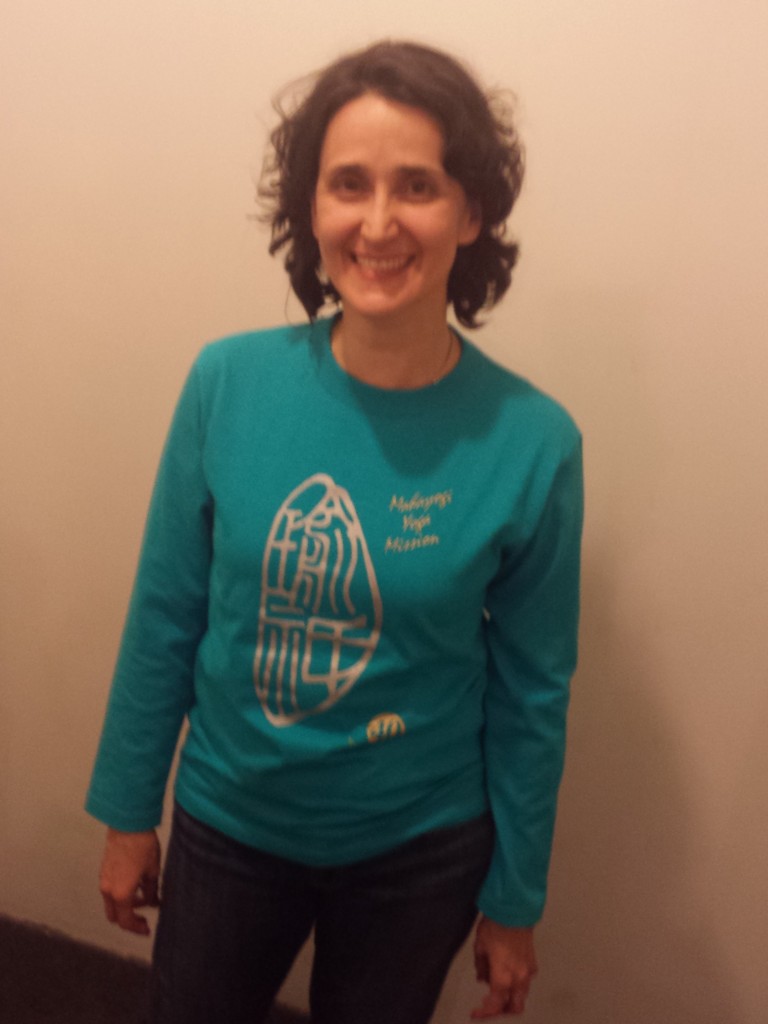
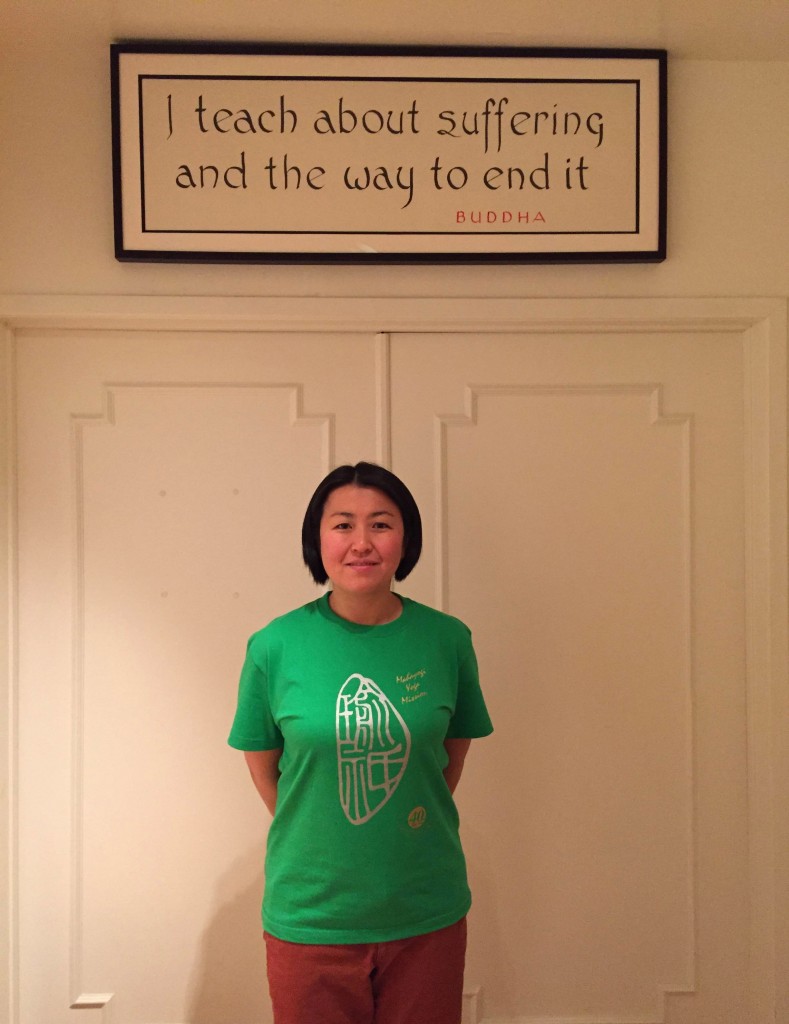
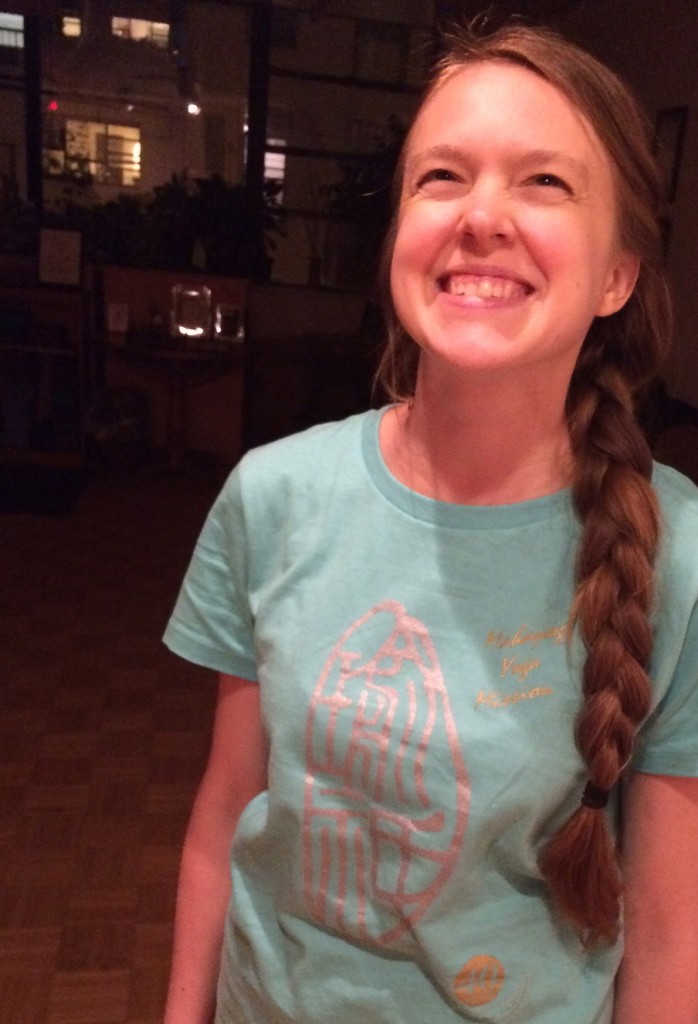
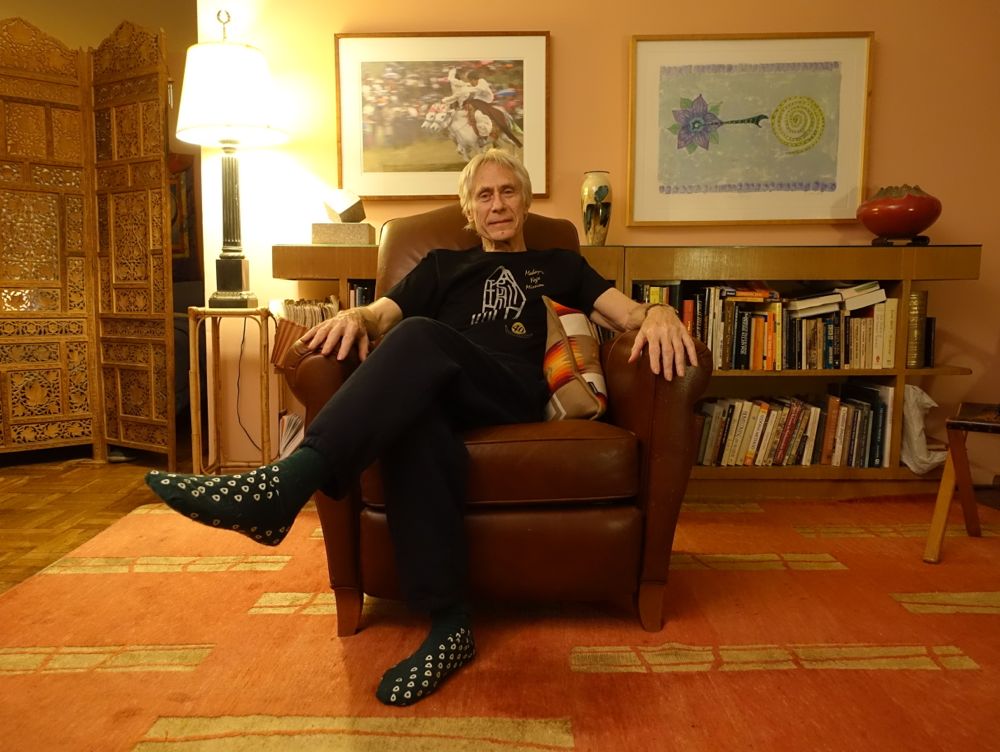
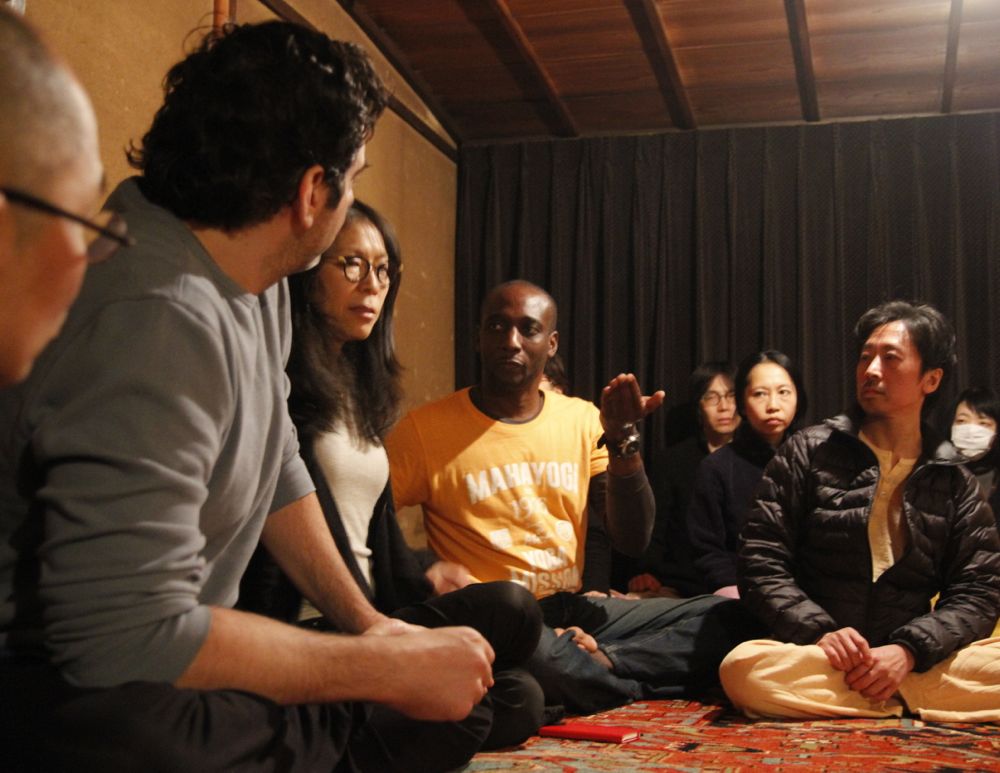
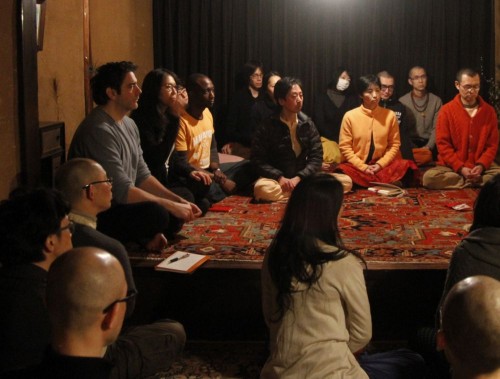
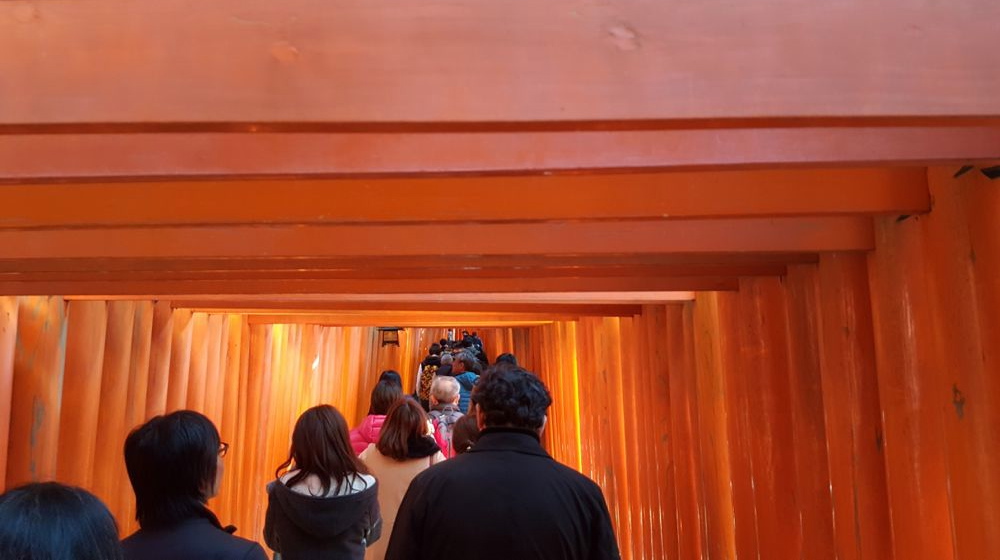
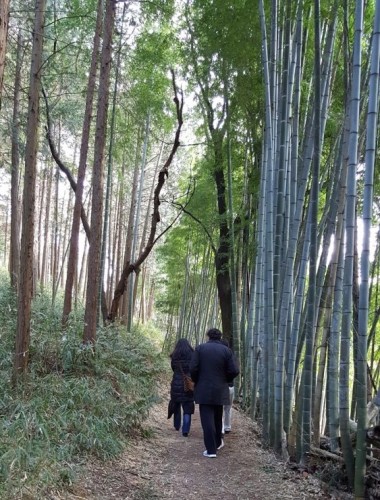
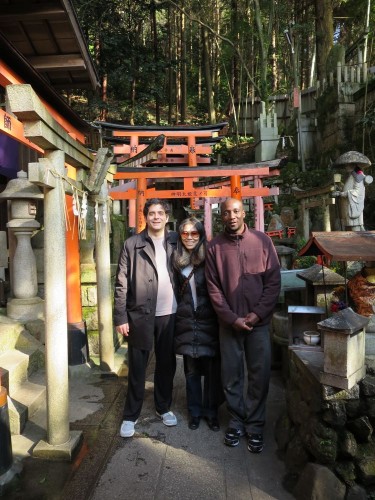

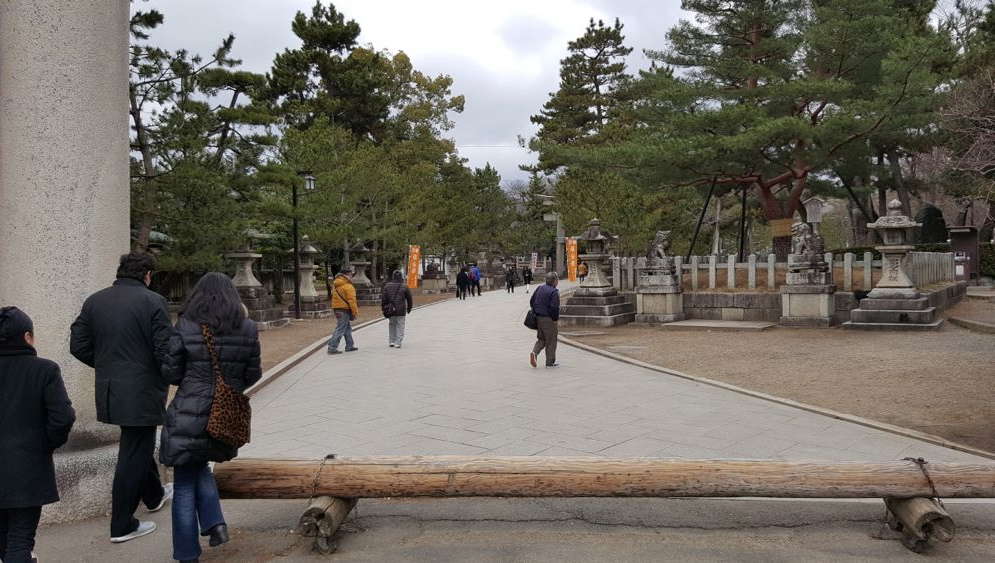
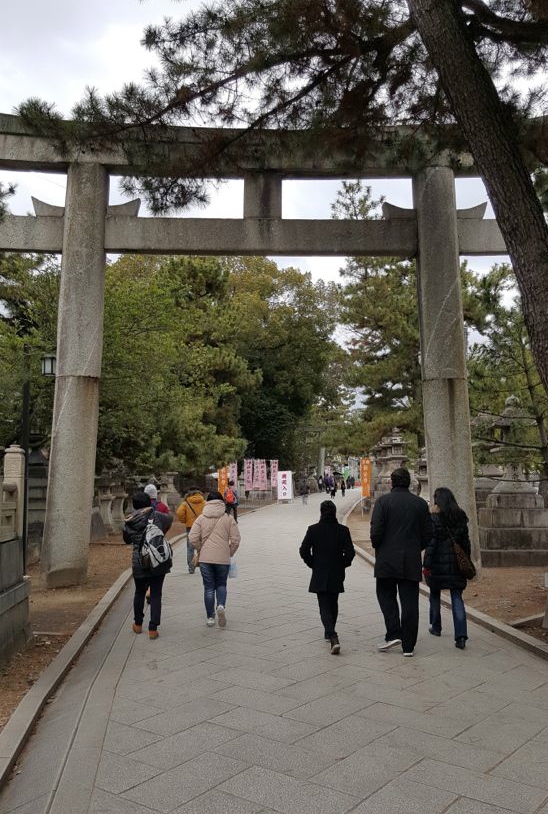
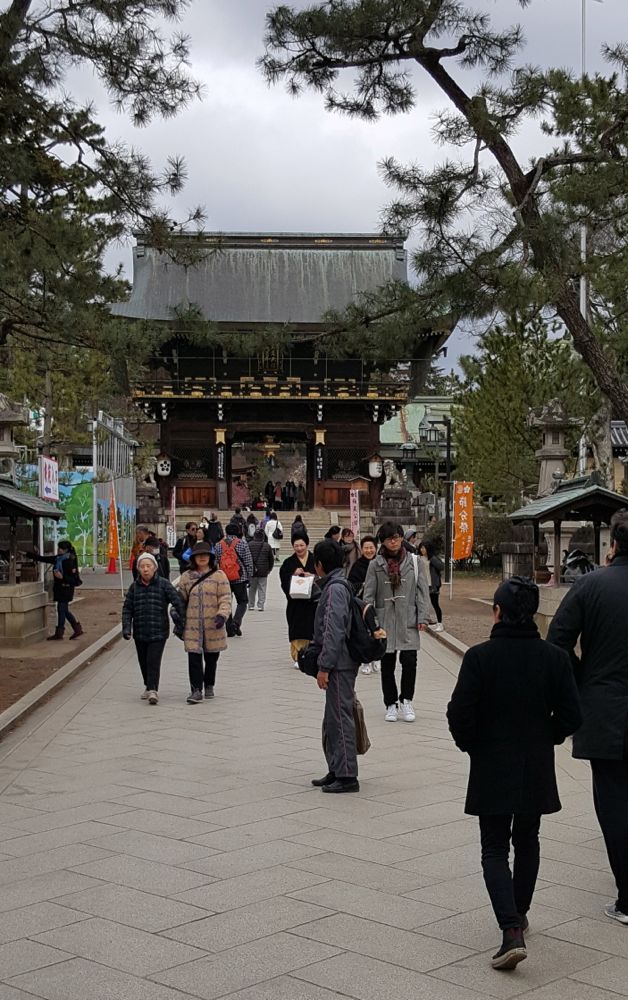
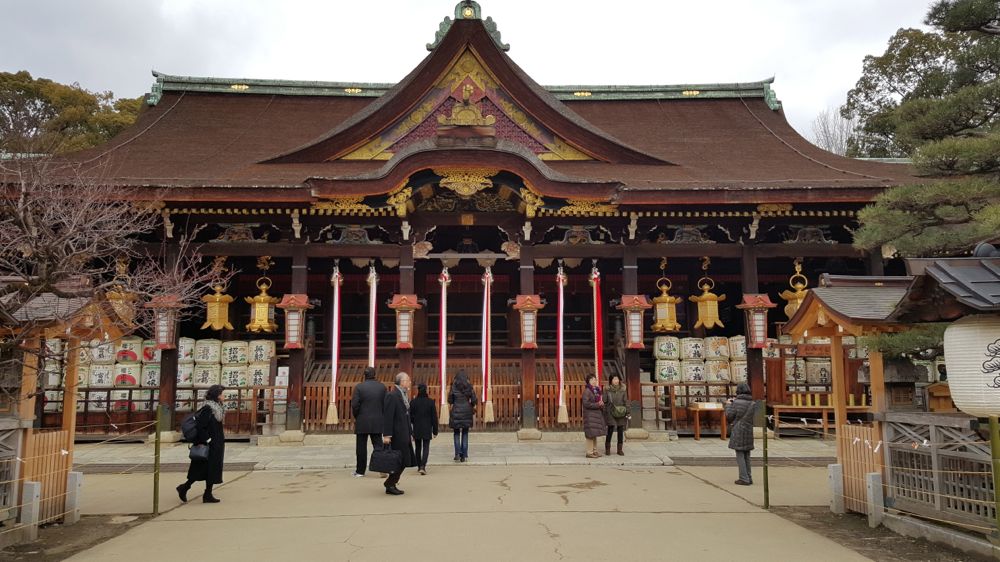
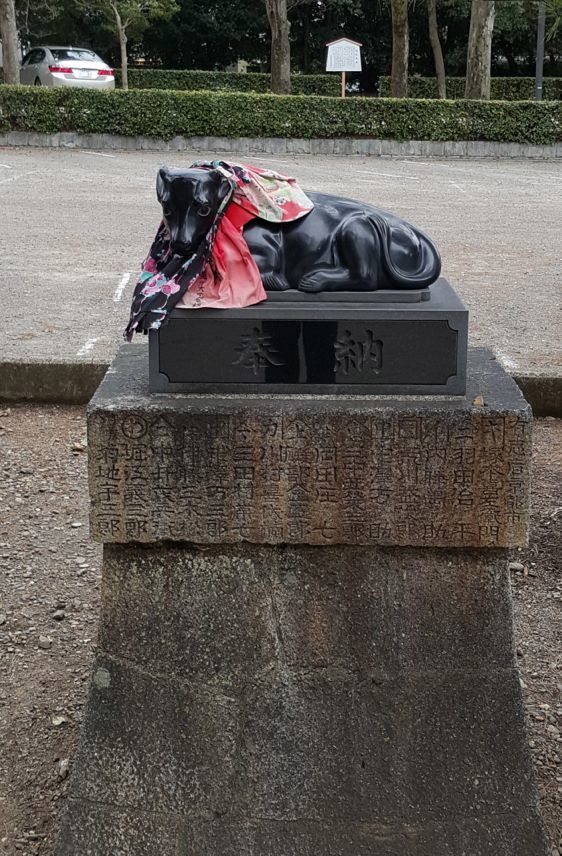
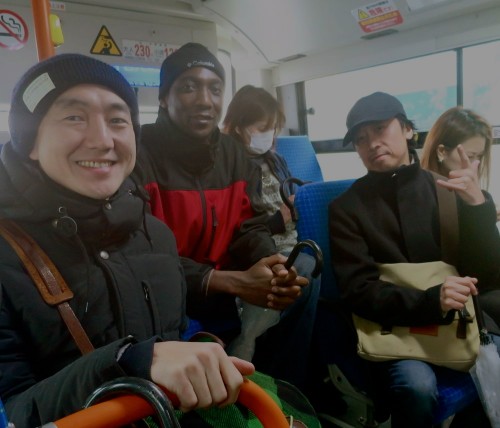 Taka, Aniruddha and Nandi
Taka, Aniruddha and Nandi